Skype, you’ve served us well.
If you’ve ever worked remotely or needed to make an international call, there’s a good chance Skype was your go-to app. For years, it was the first tool many of us reached for when starting the day. But as with all technology, change is inevitable.
Skype has officially shut down as of May 5, 2025, marking the end of an era for one of the most iconic communication platforms.
When we started building Chanty, our easy-to-use and intuitive team chat app, we did our homework. We tested a variety of apps to understand what they offered – and what they didn’t. Skype was among the platforms we reviewed, and we carefully examined its strengths and weaknesses from a user perspective to ensure that Chanty could do better.
With Skype now officially retired, it’s clear that the landscape has shifted. While it once served as a go-to platform for personal and professional connections, today’s businesses are embracing more advanced tools that offer integrated collaboration and productivity features. So, in a post-Skype world, what are the best alternatives for your team? Let’s explore the top replacements that can keep your communication seamless and effective.
Looking for best Skype alternatives? Here’s a quick peek:
- Chanty – A simple and intuitive team messaging app combining text chat, audio/video calling, task management, and landline calling, making it a well-rounded Skype alternative for both internal communication and external voice calls.
- Zadarma – A robust VoIP and cloud PBX solution with virtual phone numbers and advanced call routing, ideal for replacing Skype’s international calling and business telephony.
- Rocket.Chat – An open-source, secure communication tool for real-time messaging and team collaboration, great for organizations that need self-hosting and full data control, unlike Skype’s cloud model.
- Brosix IM – A private, encrypted communication app offering text chat, file transfer, and team chat rooms, echoing Skype’s early strengths in secure internal messaging.
- Google Meet – A streamlined video conferencing tool fully integrated with Google Workspace, suitable for those who relied on Skype for group video calls in a business environment.
- FaceTime – Apple’s built-in app for crystal-clear video and voice calls on iOS and macOS — an easy Skype replacement for Apple users, though limited by platform exclusivity.
- Viber – A consumer-friendly messaging app with end-to-end encryption, free video calls, and affordable international calling, covering many of Skype’s personal communication features.
- Zoom – A top choice for businesses needing reliable video conferencing and VoIP calling, Zoom has effectively replaced Skype for remote meetings and international communication.
- RingCentral – A powerful unified communications platform combining voice, video, and team messaging, suitable for businesses that used Skype for international calls and collaborative workflows.
- GoTo Meeting – A professional-grade online meeting solution with HD video, screen sharing, and meeting recording, ideal for users who used Skype for scheduled business meetings and presentations.
Our Skype alternatives experiment
Skype may have been a major player once, but today’s market offers many video conferencing apps. It is overwhelming for businesses to choose the right one that is most suitable for their particular requirements. We at Chanty did the research on these alternatives to Skype and see which app is worth your time. We wanted to give you a full overview of the different options out there so you can make the best decisions for your team’s communication strategy.
With Skype now gone, there are key features we’ll truly miss:
- Skype credits for landline calls: Low-cost calls to landlines, especially useful for small businesses.
- Free international calls: Affordable global calls, making it a go-to for both personal and business communication.
- Group instant chat: Easy, real-time group messaging that helped teams stay connected and organized.
- Group video calls: High-quality video calls, great for team meetings and personal connections.
- Screen sharing: Essential for remote collaboration and tech support.
Why search for Skype alternatives?
Of course, the main reason you’re looking for Skype for business alternatives is that Skype is officially closed. You might not be on board with Microsoft Teams just yet, but the truth is, alternatives had been gaining ground long before the rumors about Skype’s end even started. If you’re searching for something else, it’s probably because you’ve encountered one (or more) of the frustrations that came with using Skype and want to avoid them with other tools. Despite its pioneering role in video communication, many users have likely faced the following problems:
- Too many ads. Ads can be intrusive, especially during important calls.
- Slow performance. Skype often lags, especially during group calls or screen sharing.
- Spam from fake accounts. Security issues have led to frequent spam, making the platform less secure.
- Hacked accounts. Skype accounts are frequent targets for cyberattacks.
- Confusing design updates. Frequent changes to the interface can disrupt your experience.
Considering these issues, it’s clear why many businesses and individuals are actively seeking the best alternatives to Skype. They’re not only looking for a platform with strong, reliable voice and video calls but also one that offers better international calling options with consistent quality and pricing.
Challenges Driving the Shift from Skype to Better Alternatives
With Skype’s official shutdown, it’s no surprise that many are exploring alternatives. If you’ve been using Skype for business communication, you may have encountered some challenges that push you toward newer solutions like Microsoft Teams or other platforms.
However, transitioning from Skype isn’t always smooth. While Microsoft Teams offers more advanced features, it comes with its own set of following problems:
- Steeper Learning Curve: Teams offers a lot of features, but for those used to Skype’s simplicity, it can feel overwhelming. Its complex interface and extensive settings often require more time to master.
- Higher System Demands: Unlike Skype’s lightweight setup, Teams demands more system resources, which can affect performance, especially on older devices.
- Loss of User-Friendly Features: Skype’s quick search, easy call buttons, and accessibility features are absent in Teams. Additionally, Teams requires a Microsoft 365 account and has restrictions on external communication.
- Costlier Calling Plans: Skype’s affordable international calls are replaced by Microsoft’s pricier calling plans, which may not provide the same flexibility.
- Too Complex for Smaller Teams: While Teams is great for large organizations, smaller teams may find it more complicated than necessary for basic communication needs.
With these challenges in mind, it’s clear why businesses are seeking simpler, more efficient solutions. Switching to a user-friendly platform can help streamline communication, boost productivity, and enhance team collaboration.
Let’s take a closer look at some of the best Skype alternatives.
Feature comparison of the best Skype alternatives
| App | Voice & Video Calls | Chat | Group Calls | Call to Phones | Cross-Platform | Encryption/Security |
|---|---|---|---|---|---|---|
| Chanty | Yes | Yes | Yes | Yes | Yes | Yes |
| Zadarma | Yes | Yes | Yes | Yes | Yes | Yes (secure SIP) |
| Rocket.Chat | Yes (via Jitsi/others) | Yes | Yes | No (native) | Yes | Yes (self-hosting option) |
| Brosix IM | Yes | Yes | Yes | No | Yes | Yes (end-to-end) |
| Google Meet | Yes | No (uses Gmail/Chat) | Yes | No | Yes | Yes |
| FaceTime | Yes | No | Yes | No | No (Apple only) | Yes (Apple encryption) |
| Viber | Yes | Yes | Yes | Yes | Yes | Yes (end-to-end) |
| Zoom Phone | Yes | Yes | Yes | Yes | Yes | Yes |
| Google Voice | Yes | Yes | Yes (limited) | Yes | Yes | Yes |
| RingCentral | Yes | Yes | Yes | Yes | Yes | Yes (enterprise-grade) |
Chanty vs Skype

Skype served us well for many years, but let’s be honest –– it’s shown its age. Sure, it was great when it was the only option available for international calls and instant messaging, but the modern workplace demands more. If you’re used Skype for work, it might be time to consider a better, more tailored alternative. That alternative? Chanty.
Chanty is an easy-to-use, capable team chat app made for business applications. It’s a notification center too, which means you’ll be able to get notifications from all other apps you use in one place. This is something that Skype does not have.
All your notifications in one place
Let’s be real – toggling back and forth between apps to check notifications is a productivity killer. With Skype, you had to toggle between several platforms to stay on top of your tasks, messages, and updates. Chanty does it better. It consolidates all of your app notifications into one place, which makes it a central hub for your team communication. Whether from Slack, MailChimp, or Zendesk, Chanty keeps you informed without overwhelming you with tabs and distractions.
Chanty is build for team communication
On Skype, anyone you ever gave your contact to was a click away – from your aunt to your childhood friend who added you years ago. That wasn’t always ideal when you were trying to work. On the other hand, Chanty is a closed team chat app built for you and your colleagues. No unwanted calls or random messages – just streamlined, professional communication.
Built-in calling with global reach
Skype has long been praised for its international calling, but Chanty steps up with a modern alternative. With Chanty, you can make voice and video calls, including international calls to mobile phones and landlines across the globe. It’s a powerful alternative to Skype, offering seamless international communication at lower rates than most competitors. Whether connecting with a colleague abroad or reaching a client’s office line, Chanty keeps it simple and affordable. Ready to switch? Try it out today.
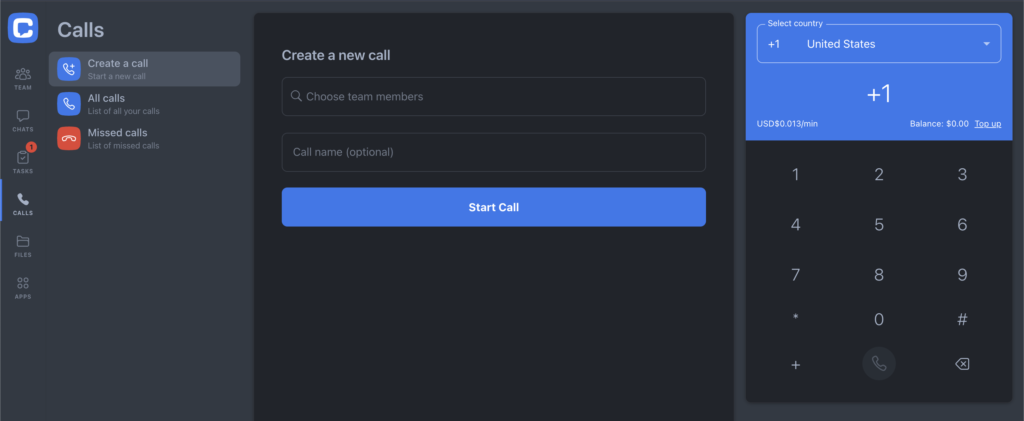
Seamless, flexible conversations
Work isn’t one-size-fits-all, and neither should your communication tool be. Want to broadcast a company-wide announcement or have a private chat with a coworker? Chanty keeps it easy to switch between public and private conversations. You can even enter one-on-one conversations for more focused discussion. Skype? It was a bit more tricky when you tried to manage multiple types and spaces of chats in one place.
Simplified task management
Chanty takes communication one step further by including task management features directly within the app. Skype never quite nailed the task management side of things – so you end up relying on other tools. With Chanty, everything from messaging to task delegation happens in one seamless platform. It’s all about making your workday more organized and less cluttered.
Ad-free experience
Nothing kills the flow like pop-up ads. Skype’s free version bombarded you with ads, breaking up your concentration and slowing you down. Chanty, however, delivers a clean, ad-free experience that lets you focus on what matters – your work.
Let’s take a look at the comparison of Chanty vs. Skype in this table.
Chanty vs Skype
| Features | Chanty | Skype |
|---|---|---|
| Interface and design | Simple and clean | More complicated and less intuitive |
| Instant chat | Yes | Yes |
| Audio and video calls with screen sharing | Yes | Yes |
| Integrations with third-party software | Yes | No |
| Search | Searchable messages, files and links | Searchable messages |
| Message history limit | No limit | No limit |
| One on one Public Private conversations | Yes | Yes |
| File sharing | – Files you share are stored in the Chanty cloud and can be easily forwarded to anyone- Each file receives a unique link- You can also view images in the chat feed | – All kinds of fileson the desktop version – Only photos on the mobile version |
| SMS, landline and mobile calls | No | Yes |
| Task management | Yes | No |
| Supported platforms | Android, iOS, web, Windows, macOS, Linux | Android, iOS, web, Windows, macOS, Linux |
| Price | Freemium | It’s free until you want to send SMS or call mobile/landline numbers. |
| In-app ads | No ads | Yes |
Chanty vs Skype summary
- More than just messaging: Chanty is more than a chat app – it’s an integrated hub for team communication and collaboration. With task management and third-party app integrations built-in, you won’t have to juggle multiple tools like you do with Skype.
- Focused, work-centric communication: Unlike Skype, where anyone can reach out to you, Chanty creates a closed workspace for your team. It’s where collaboration thrives without the distractions from outside contacts.
- Better file-sharing experience: Chanty offers cloud storage and shareable file links, making collaboration on documents, images, and resources easier. Skype? It’s much more limited in this area.
- No more interruptions: Skype’s free version comes with ads – distracting, time-wasting ads. With Chanty, you can work without the interruptions, allowing you to stay in the zone and get more done.
Last but not least, Chanty is constantly evolving. Our goal is to make the best team chat app out there, with only the features that individuals and companies will find useful. We are constantly adding new cool features and we’re excited for what the future brings for us and our users. If you’d like to give Chanty a try, you can sign up today or book a free demo! 😉
Zadarma vs Skype
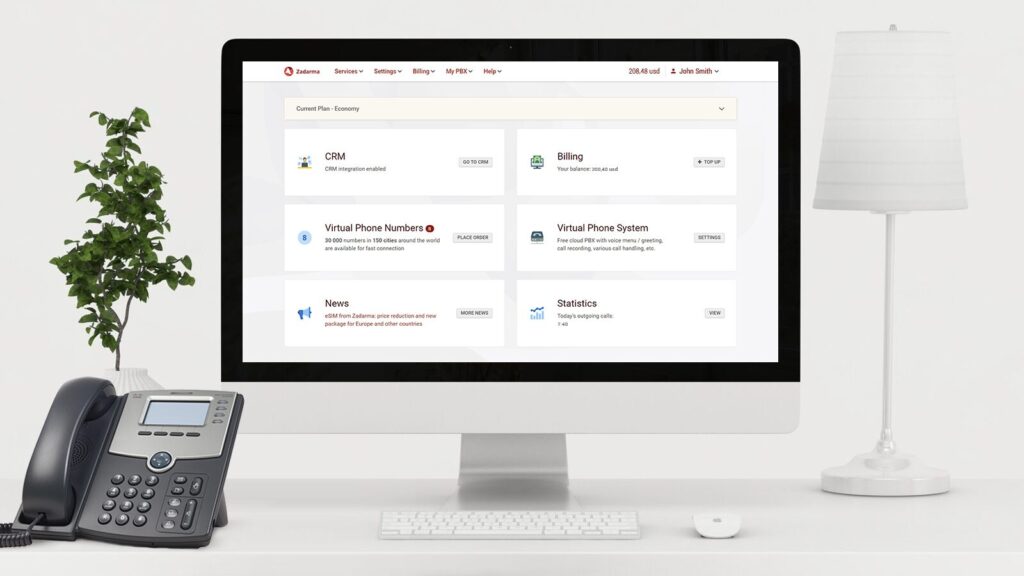
Zadarma is a feature-rich VoIP alternative to Skype, designed for businesses looking for a global, cost-effective, and scalable communication solution. While Skype primarily functioned as a messaging and video calling app, Zadarma provides a comprehensive cloud-based PBX system, virtual phone numbers, and advanced call management features that cater to growing businesses, making it an excellent replacement for Skype in enterprises.
Enterprise-grade telephony & CRM integration
Unlike Skype, which was consumer-focused, Zadarma offered virtual phone numbers in over 100 countries, advanced call routing, IVR menus, speech analytics, and CRM integration for improved customer service. Businesses could record, monitor, and analyze call performance using built-in call analytics and AI-powered speech recognition, ensuring high-quality customer interactions.
Cost savings with per-second billing & free PBX
Skype required prepaid credit or a subscription-based model for calling landlines and mobiles, whereas Zadarma operated on a per-second billing system, reducing costs for businesses. Additionally, Zadarma’s cloud-based PBX was free, meaning businesses only paid for outgoing calls while benefiting from a full-fledged VoIP system.
Zadarma vs. Skype
| Features | Zadarma | Skype |
|---|---|---|
| VoIP Calling | Yes – Per-second billing | Yes – Per-minute billing |
| Cloud PBX System | Yes – Free with all plans | No |
| Virtual Phone Numbers | Yes – Available in 100+ countries | Limited |
| Free Call Minutes | Yes – Up to 2,000 per month | No |
| Landline & Mobile Calls | Yes – Included in plans | Yes – Requires Skype Credit |
| IVR & Call Routing | Yes – Multi-level IVR | No |
| Call Recording & Storage | Yes – Up to 4GB | No |
| Speech Recognition & Transcription | Yes – AI-powered | No |
| Call Analytics & Performance Monitoring | Yes – Built-in with insights | No |
| Team Collaboration Features | CRM & PBX integration | Basic chat & calling |
| CRM Integrations | Yes – Salesforce, Zoho, MS Teams, HubSpot | No |
| Security & Compliance | Yes – Encrypted VoIP & GDPR-compliant | Limited |
| 24/7 Support | Yes – Chat, phone, tickets | No – Community-based |
| Self-Hosting Option | No | No |
| Pricing | Starts at €0/month, paid plans from €15/month | Free, paid calls to mobile/landline |
Zadarma vs. Skype summary
Zadarma was a business-centric Skype alternative, offering cost-effective VoIP solutions with advanced telephony features, free PBX, and CRM integrations. While Skype was once a popular choice for personal and basic business communication, it lacked essential features like call routing, IVR, speech analytics, and scalable PBX capabilities.
For companies seeking a professional, scalable, and affordable business communication solution, Zadarma outperforms Skype with its enterprise-grade call management tools and global connectivity.
Rocket.Chat vs. Skype
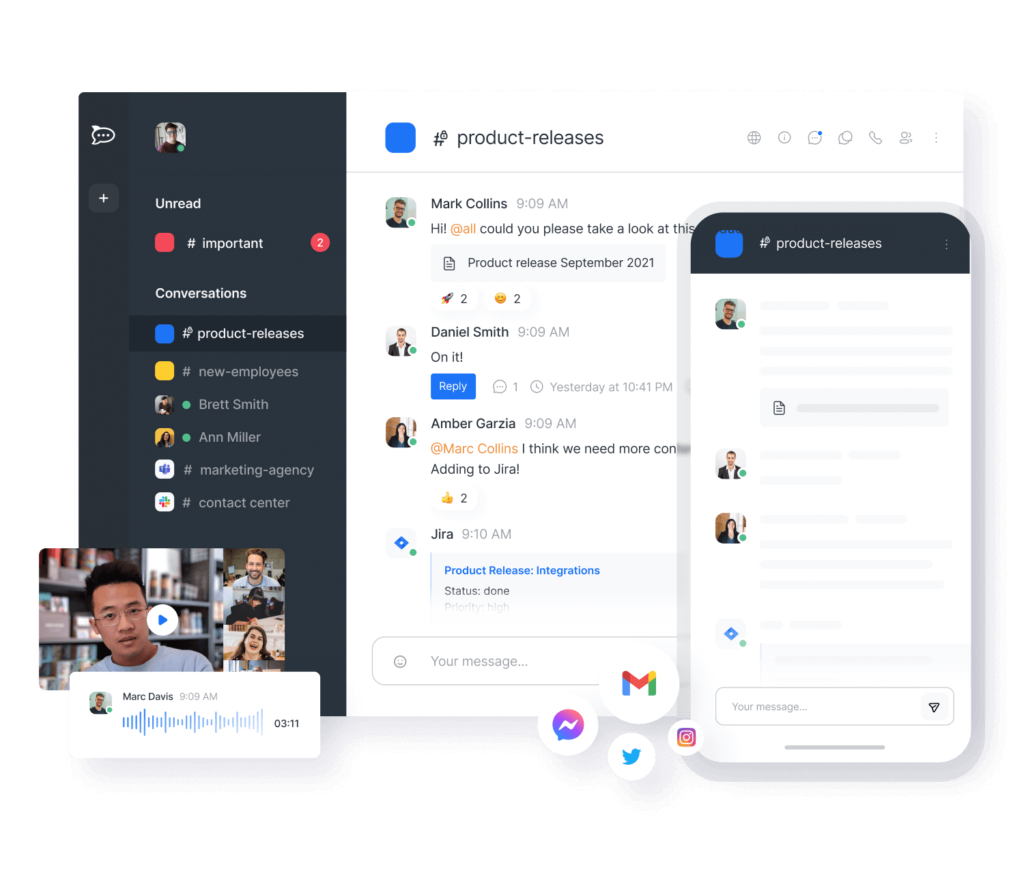
Rocket.Chat is a sovereign and modern alternative to Skype that provides secure, real-time messaging and collaboration. Unlike Skype, which is primarily a general-purpose communication tool, Rocket.Chat is designed for teams, businesses, and enterprises that require complete control over their data and security.
Enterprise-Grade Security and Compliance
Unlike Skype, which stored data on Microsoft’s servers, Rocket.Chat allows businesses to self-host their communication platform, ensuring GDPR, HIPAA, and ISO 27001 compliance. This level of security eliminates the risks associated with third-party service providers and ensures that sensitive data remains fully under company control.
Seamless Team Collaboration with Customization
Rocket.Chat is built for team collaboration, offering organized discussions through team and private channels, secure file sharing, and integrations with essential business tools like Jira, GitHub, and Zapier. Skype, in contrast, lacks dedicated team channels and has limited third-party integrations.
Rocket.Chat vs Skype
| Features | Rocket.Chat | Skype |
| Instant Chat | Yes | Yes |
| Team & Private Channels | Yes – Organized discussions | No dedicated team channels |
| Voice & Video Calls | Yes – Secure calls with encryption | Yes |
| Screen Sharing | Yes | Yes |
| File Sharing | Yes – Unlimited file storage | Yes – 300MB per file |
| Integrations | Yes – Jira, GitHub, Zapier and more | Limited integrations |
| Self-Hosting Option | Yes – Full control over data | No – Microsoft-owned servers |
| Security & Compliance | Yes – GDPR, HIPAA, ISO 27001, SOC 2 | Limited business compliance |
| Federated Messaging | Yes – Communicate across platforms | No |
| Landline & Mobile Calls | Yes — VoIP calling | Yes (Paid feature) |
| Task Management | Yes – Integration with leading task management tools | No |
| Supported Platforms | Windows, macOS, Linux, iOS, Android, Web | Windows, macOS, Linux, iOS, Android |
| Pricing | Free (Community Edition), $4/user/month (Pro), Custom (Enterprise) | Free, paid calls to mobile/landline |
Rocket.Chat vs. Skype Summary
Rocket.Chat is a powerful alternative to Skype, offering enterprise-grade security, self-hosting capabilities, and advanced integrations. While Skype was widely used for general communication, Rocket.Chat provides greater data sovereignty, compliance, and flexibility, making it the ideal choice for businesses and organizations that require full control over their communication infrastructure.
Brosix IM vs. Skype

Brosix IM is a strong option among Skype for business alternatives. It offers many features similar to Skype, including audio and video calls, instant messaging, and screen sharing. What makes Brosix different is the focus on internal team communication through private team networks.
Brosix also pays particular attention to security, with fully encrypted security channels and a range of administrative features designed to keep team communication safe.
Private Team Networks for Enterprise Customers
Outside of its IM app, Brosix specializes in private team communication networks. These networks are fully administrable. Brosix allows administrators to control which features are accessible to users, which users can join the network, and who can communicate with whom.
Security
Both Brosix and Skype use AES 256-bit encryption, one of the strongest algorithms on the market. Customers using Brosix private network have direct control over which users can access the network. On the other hand, Skype’s free public app allowed strangers to reach out and contact users. There are privacy settings for this, but the standard setting allows unknown contacts to send messages and call users.
Brosix vs Skype
| Features | Brosix IM | Skype |
| Instant Chat | Yes | Yes |
| Chat Rooms | Yes, persistent chat rooms in private team networks | Available in Skype for business only |
| Screen Sharing | Yes, screen sharing and remote desktop features | Yes |
| File Transfers | Yes, unlimited in size P2P file transfer | Yes, up to 300 MB directly through Skype. Larger files via OneDrive |
| SMS | No | Yes, in paid versions |
| Landline and mobile calls | No | Yes, in paid versions |
| Supported Platforms | Android, iOS, web, mac, Windows, Linux | Android, iOS, web, mac, Windows, Linux |
| Price | Free IM app. Private networks free for teams up to 10. Starting at $3 per user per month after that. | Free IM app. Skype for business starting at $5 per user per month. |
| In-app ads | No | Yes |
Brosix IM vs. Skype summary
Brosix IM and Skype have many features in common, particularly when Brosix is compared with Skype for Business. The closure of Skype’s leaves an opening for other competitors however. Brosix IM could fill this role with its focus on private team networks that provide a relatively simple-to-use features package, much like Skype.
Google Meet vs Skype
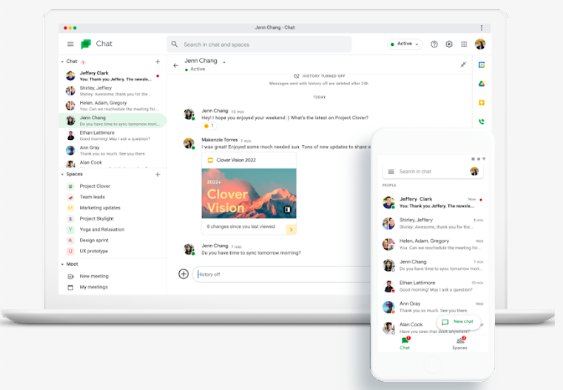
When it comes to their communication features, these two tools are pretty similar. You can use both to chat, make audio and video calls and call mobile and landline numbers. If you’re interested, we have a detailed comparison of Skype vs Google Meet for you to check out how the two fare against each other. When it comes to features, this is what the situation looks like:
Interface and design
Google Meet’s interface is distinct and doesn’t follow traditional chat design conventions. Every conversation opens as a new window, which can quickly clutter your screen with too many chats. While the default background images are visually appealing, they cannot be customized.
Skype, on the other hand, has gone through various design changes, most notably in 2017. While some users initially disliked the changes, most have adapted, and its design is now familiar and functional.
Notifications
Google Meet allows you to toggle notifications on and off, providing flexibility. However, unlike Skype, Google Meet doesn’t offer direct push notifications for incoming call, and instead, it notifies you via Gmail. Skype provides pop-up notifications for video/audio calls, ensuring you never miss one.
Integration with other tools
Google Meet excels in integration with Google’s ecosystem, making it easy to access from Gmail and other Google apps. If you’re heavily invested in Google services, this seamless connection can be very convenient.
Video/Audio Calls & Screen Sharing
Both apps perform well in video calls and screen sharing. There were no issues during our team’s video call tests, so either app is suitable for video communication needs.
Google Hangouts vs Skype
| Features | Google Chat | Skype |
|---|---|---|
| Instant chat | Up to 150 people | Doesn’t specify |
| Audio and video group calls | Up to 150 people for audio calls; Up to 100 for video calls. | Up to 100 people for audio and video calls |
| Screen sharing | Yes | Yes |
| Chat extras | Maps, emojis, stickers, and GIFs | Smileys, mojis;Send contacts, location, video messages |
| File sharing | Images only (or everything but only via Google Drive) | 300 MB (larger files could be sent via OneDrive, their cloud storage). Files are available for 30 days on all devices |
| Supported platforms | Android, iOS, and the web | Android, iOS, web, Windows, macOS, Linux |
| SMS | No | Yes, paid option |
| Landline and mobile calls | Yes, paid option | Yes, paid option |
| Price | It’s free on your gmail account and $6 with 30 GB storage and 100 video call participants; $18 with 5TB and 250 participants | It’s free until you want to send SMS or call mobile/landline numbers. |
| In-app ads | Hell no | Hell to the Yes |
Google Meet vs. Skype – summary
Both Google Meet and Skype offered strong video/audio calls and screen sharing capabilities. Google Meet integrated well with other Google apps but was limited in file sharing, only allowing images (or other files via Google Drive). It also lacked a desktop app. Skype, on the other hand, supported a broader range of file sharing options and provided a desktop app for more flexibility. While Google Meet excelled in integration with Google services, Skype offered more affordable landline and mobile calls.
FaceTime vs Skype

FaceTime is Apple’s native video and audio calling app, introduced in 2010 and integrated across iPhones, iPads, Macs, and Apple Watches. While Skype once served as a cross-platform leader in video communication, it has now been officially discontinued (as of 2024). In its time, Skype was known for its powerful instant messaging, screen sharing, and VoIP features. In contrast, FaceTime continues to evolve but remains tightly bound to the Apple ecosystem.
Platform-locked but seamlessly integrated
FaceTime delivers a smooth experience across Apple devices, offering high-quality group video calls with up to 32 participants, SharePlay for co-watching content, and voice isolation for clearer audio. However, it does not offer native support for Windows or Android. Non-Apple users can join FaceTime calls via browser links, but this is limited to joining only — not hosting.
Lacks full collaboration features
Unlike Skype, which featured rich chat capabilities, file sharing, SMS support, and mobile/landline calling, FaceTime is focused exclusively on calls. Instant messaging is not part of FaceTime itself — it relies on iMessage, which is also exclusive to Apple devices. FaceTime also lacks Skype’s file storage, advanced chat extras, and business-friendly communication tools.
Let’s take a closer look at FaceTime and Skype features in this table.
FaceTime vs Skype
| Features | FaceTime | Skype |
|---|---|---|
| Instant chat | No | Powerful chat |
| Audio and video group calls | Up to 32 people | Up to 100 people |
| Screen sharing | No | Yes |
| Chat extras | No (iMessage) | Smileys, emojis;Send contacts, location, video messages |
| File sharing | No (iMessage) | 300 MB (larger files could be sent via OneDrive, their cloud storage). Files are available for 30 days on all devices |
| Supported platforms | iOS, macOS | Android, iOS, web, macOS, Windows, Linux |
| SMS | No | Yes, paid option |
| Landline and mobile calls | No | Yes, paid option |
| Price | Free | It’s free until you want to send SMS or call mobile/landline numbers. |
| In-app ads | No | Yes |
FaceTime vs Skype – summary
It would be a stretch to call FaceTime a competitor to Skype. The only feature that they have in common is video calls. Just like all other Apple apps, FaceTime requires iOS, and it’s only sufficiently good paired with iMessage. All of this doesn’t make it ideal for work.
Viber vs Skype
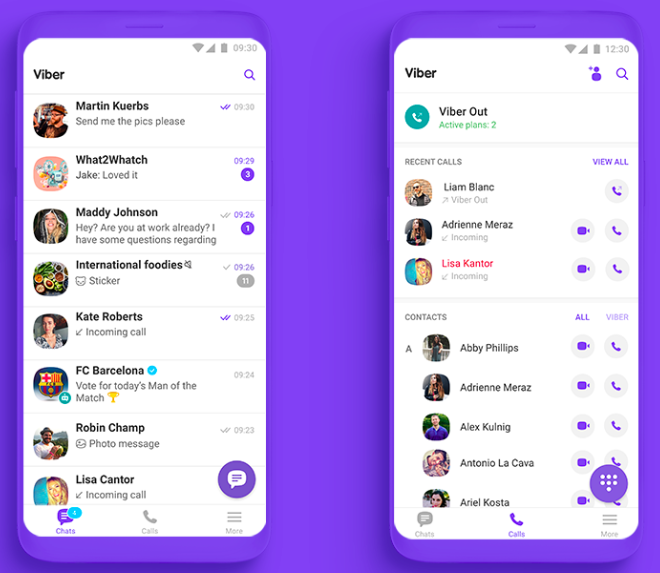
Out of all the other apps like Skype, Viber is likely the closest in terms of functionality. It offers similar features like voice and video calls, messaging, and group chats.
Difference: Viber needs your phone number
The major condition for using Viber is giving it your phone number and access to your smartphone. You cannot sign up for the app at all if you don’t have a working mobile phone number, both for registration and use.
Businesses that have your phone number will keep sending you spam
You can unsubscribe every time you get a message from a new company, but it will draw your attention away. I’ve received quite a few offers so far and every year, the number of companies using Viber for advertising is growing. The rest of the features are similar to Skype. Let’s take a look at the table.
Viber vs Skype
| Features | Viber | Skype |
|---|---|---|
| Group chat | 250 people | Doesn’t specify |
| Message actions | Copy, forward, delete for myself, delete for everyone. You can’t edit messages | Copy, quote, edit, remove |
| File sharing | All kinds of files | All kinds of files |
| Search | Basic search within messages, no files search. | More advanced and convenient search functionality |
| Audio / video calls | Up to 40 people | Up to 100 people |
| Screen sharing | Yes | Yes |
| In-chat extras | Stickers, emoticons, giphy, Send contacts, location, video messages | Smileys, emojis;Send contacts, location, video messages |
| Landline / mobile calls | Yes | Yes |
| Pricing | Free with paid options: – landline/mobile calls- extra stickers- paid services for businesses | Free with paid options: – landline/mobile calls- SMS |
| SMS to a mobile number | No | Yes |
| In-app ads | Yes | Yes |
Viber vs Skype – summary
As Skype meet its end, Viber offers a more mobile-friendly alternative, with a user-friendly interface and streamlined experience. Skype excels with advanced desktop features, like better search and notification settings, but Viber is simpler to use. Skype allows calls with up to 100 people, while Viber limits it to 40. Both support group and one-on-one chats, and similar message actions, but Skype offers emoticons and text in video calls, which Viber lacks. Viber Out is cheaper for mobile and landline calls in the US and UK, though Viber sends ads, while Skype displays in-app banner ads. For mobile-focused, cost-effective communication, Viber is a strong alternative to Skype.
Zoom vs. Skype
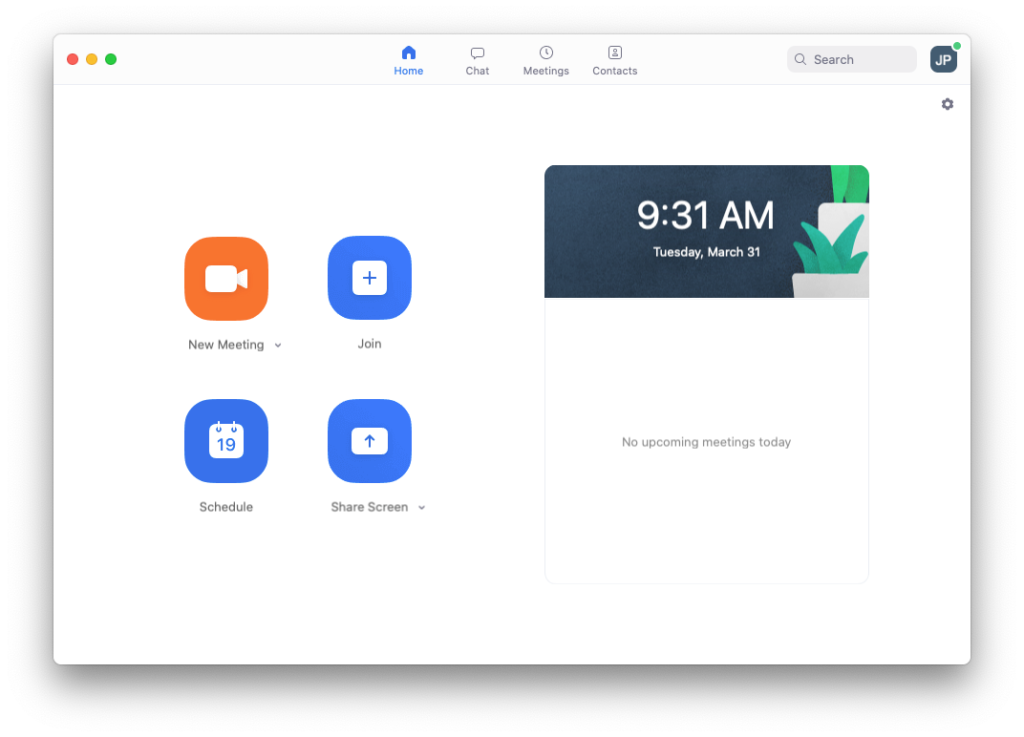
Zoom is a feature-rich, newer alternative to Skype that offers scalable video conferencing, instant messaging, and virtual collaboration. It. Where Skype was previously used ubiquitously for basic calling and messaging, Zoom is designed for business environments that require high-quality video, secure communications, and high-end functionality for teams and organizations.
Enterprise-grade communication and reliability
Unlike Skype, which Microsoft has formally discontinued for business application, Zoom is still maturing with video conferencing for enterprises, webinar support, and compliance features. Zoom offers end-to-end encryption, HIPAA, SOC 2, and GDPR compliance, making it a viable platform for businesses with strict security requirements. Skype lacked extensive compliance support and is no longer actively developed for business application.
Scalable collaboration with advanced features
Zoom facilitates seamless team collaboration through high-definition meetings, breakout rooms, screen sharing, virtual whiteboards, and integrations with the best tools like Google Workspace, Microsoft 365, Slack, and Trello. Skype lacks these modern collaboration features and no longer offers the business-class infrastructure Zoom offers.
Zoom vs Skype
| Features | Zoom | Skype (Legacy) |
|---|---|---|
| Instant Chat | Yes | Yes |
| Team & Private Channels | Yes – Team chat, threads, searchable history | No dedicated team channels |
| Voice & Video Calls | Yes – HD video, large meetings, breakout rooms | Yes – Limited group calling |
| Screen Sharing | Yes – With advanced annotation tools | Yes |
| File Sharing | Yes – In meetings and chat | Yes – 300MB per file limit |
| Integrations | Yes – Google, Microsoft 365, Slack, Trello, Zapier | Limited integrations |
| Self-Hosting Option | No – Cloud-based platform only | No – Microsoft-owned servers |
| Security & Compliance | Yes – E2EE, HIPAA, GDPR, SOC 2, and more | Minimal enterprise compliance |
| Webinar & Event Hosting | Yes – Up to 50,000 attendees via Zoom Events | No |
| Landline & Mobile Calls | Yes – VoIP and global telephony add-ons | Yes (Paid feature) |
| Task Management | Yes – Via integrations (Asana, Trello, etc.) | No |
| Supported Platforms | Windows, macOS, Linux, iOS, Android, Web | Windows, macOS, Linux, iOS, Android |
| Pricing | Free (Basic), $14.99+/month (Pro plans), Custom (Enterprise) | Free (calls to landlines/mobiles are paid) |
Zoom vs. Skype – summary
Zoom is a future-proof communications platform built for the modern enterprise, offering scalable meetings, enterprise-grade compliance, and improved quality collaboration tools. Skype, the original internet calling pioneer, has been officially retired from business use by Microsoft and lacks the functionality, support, and development that business environments require today. For businesses seeking a high-quality, secure solution, Zoom is the clear and reliable option compared to Skype.
RingCentral vs. Skype
RingCentral is a serious alternative to Skype’s international calling capability. While Skype has been a default choice for VoIP and video calling for so long, RingCentral offers a more full-featured cloud phone system, which is available to both consumer users and businesses looking for low-cost international calling, team collaboration, and business-class features.
Cloud-based calling with business features
Compared to Skype, which is primarily focused on VoIP and video calling, RingCentral is a full-fledged cloud communications solution with unlimited calling, SMS, voicemail, and team messaging. It’s ideal for personal or business use, and its features go way beyond Skype’s simple call feature, making it a solid Skype replacement for many teams.
International calling with global coverage
RingCentral offers competitive international calling plans, with over 40 countries included in unlimited calls in certain business plans. Skype, however, requires Skype Credit to make international calls, which can add up in the long term.
Security and enterprise-grade reliability
RingCentral uses enterprise-grade security and encryption for calls and messages, offering privacy and reliability. While Skype had standard encryption, its public nature means users may receive spam calls or messages from unknown callers.
RingCentral vs Skype
| Features | RingCentral | Skype |
| Instant Messaging | Yes | Yes |
| VoIP Calls | Yes, unlimited in select plans | Yes, free Skype-to-Skype calls |
| International Calls | Yes, included in some plans | Yes, requires Skype Credit |
| Call Forwarding | Yes, advanced routing options | Limited forwarding options |
| Video Conferencing | Yes, integrates with RingCentral Meetings | Yes, standalone feature |
| SMS & Business Messaging | Yes | Limited |
| Security | Enterprise encryption, spam blocking | Basic encryption, potential spam issues |
| Business Features | Voicemail transcription, team collaboration, auto-attendant | Limited enterprise features |
| Price | Plans start at $19.99/month, includes unlimited domestic calls and some international calling. | Free IM app, international calls require credits |
RingCentral vs. Skype – summary
RingCentral is a serious alternative to Skype for international calls with unlimited global calling in some plans, enterprise-class security, and business communications all within a single platform. Skype was popular when placing general VoIP calls, yet RingCentral provides a more business-oriented, secure, and scalable platform for both home customers and business users who need reliable international communications.
GoTo Meeting vs. Skype

GoTo Meeting is a business-class online meeting solution designed for business-class video conferencing, webinars, and remote meetings. Skype, now officially withdrawn, was once a well-known app for personal and business calls but lacked the enterprise-class features needed for the modern-day online meetings and team collaborations.
Professional video conferencing with business features
GoTo Meeting is built with remote business meetings specifically in mind, offering features like HD video, screen sharing, meeting transcription, and branded meeting links. Skype, while groundbreaking in its time, was focused on casual video calls and basic group calls, with fewer scheduling or professional host capabilities.
Reliability and scalability for organizations
GoTo Meeting includes scheduling software, Microsoft Outlook and Google Calendar integration, and administration features for IT managers. Skype had fewer business-oriented features, and its downfall reflects Microsoft’s focus on promoting Microsoft Teams as a more robust alternative for office collaboration.
GoTo Meeting vs Skype
| Features | GoTo Meeting | Skype |
|---|---|---|
| Instant Messaging | Limited – Chat during meetings | Yes – Full chat capabilities |
| Video Conferencing | Yes – HD video for up to 250 participants | Yes – Group video calls up to 100 people |
| Screen Sharing | Yes – One-click sharing | Yes |
| Meeting Transcription | Yes – AI-powered or recorded meetings | No |
| Custom Meeting Links | Yes | No – Invite via usernames or contacts |
| Webinar Hosting | Yes – Via GoTo Webinar | No |
| File Sharing | Limited – Via in-meeting chat | Yes – Up to 300MB per file |
| Integrations | Yes – Calendar apps, Slack, Office tools | Limited |
| SMS and Mobile Calling | No – VoIP-focused | Yes – Paid VoIP and SMS |
| Supported Platforms | Windows, macOS, iOS, Android, Web | Windows, macOS, Linux, iOS, Android, Web |
| Pricing | Starts at $14/month (Professional); free trial available | Free; Paid for calls to mobile/landline |
| In-App Ads | No | Yes |
GoTo Meeting vs Skype – summary
GoTo Meeting offers a robust and reliable solution for virtual business meetings, complete with professional-grade features like transcription, integrations, and scalability for large teams. While Skype paved the way for online communication, it lacked the advanced scheduling, webinar support, and enterprise tools that modern platforms like GoTo Meeting provide today.
Skype alternatives summary
As Skype officially closes its doors, marking the end of an era in communication, we’ve tested ten of its top alternatives to find the ones that can truly fill its shoes. After using them extensively with our internal team, we’re ready to share our honest insights.
For years, Skype has been the go-to platform for staying connected across distances. Its video conferencing, voice chats, and group conversations made it a staple in both personal and professional communication. But as time moves on, newer platforms are offering innovative features that Skype can no longer match. With Skype’s official retirement, it’s time to explore what comes next.
So, what’s better than Skype?
As Skype takes its final bow, it’s clear that it’s time to move on. But here’s the good news: There’s Chanty, a shining star waiting to take its place. With features like effortless texting, audio and video calls, screen sharing, task management, and voice messaging, Chanty has the entire communication package for your team. Sign up today and see for yourself!
This article was originally posted in September 2018 and updated in May 2025.





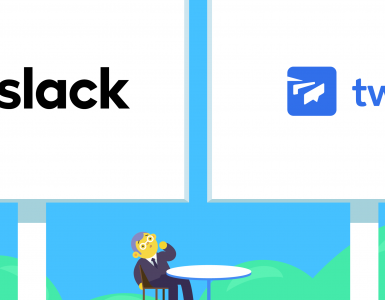



Add comment